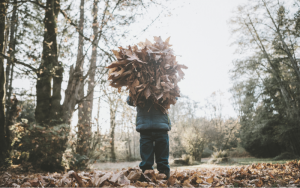Arthritis is any disorder that affects joints; it literally means inflammation within the joint itself. Symptoms include joint pain and stiffness and may include redness, warmth, swelling, and decreased the range of motion of the affected joints.
What is osteoarthritis?
Osteoarthritis is the most common form of joint disease worldwide and affects around 8 million people in the UK. Also known as degenerative (wear and tear) or mechanical arthritis. In degenerative arthritis, the main difficulty is damage to the cartilage covering the ends of bones
In healthy joints, this cartilage is smooth allowing easy movement Osteoarthritis results in the cartilage rough and thin; this can cause swelling and the formation of osteophytes which are bony spurs. Drastic loss of cartilage can lead to bone rubbing on bone, altering the shape and mechanics of the joint.
Who gets osteoarthritis
Osteoarthritis mainly affects the joints that get heavy use, like hips and knees, and is more common in people from their late 40s onwards, more common in women and people with a family history of the condition. However, younger people are also a risk if they have a history of previous injuries, trauma or fractures, or other joint-related conditions, such as gout or rheumatoid arthritis.
Symptoms
- Joint pain or tenderness
- Stiffness
- Restricted movement
- Crepitus, a popping, grating or grinding sensations
- Swelling
- Weakness and muscle wasting
- Inflammation in and around the joints
- Warm, red skin over the affected joint

Inflammatory arthritis
There are many kinds of inflammatory arthritis, including:
- Rheumatoid arthritis,
- Ankylosing spondylitis
- Psoriatic arthritis
- Reactive arthritis.
These are autoimmune conditions which mean that the body’s immune system starts attacking the body. Inflammatory types of arthritis often affect several joints causing damage, pain and stiffness. Other body tissues may also be affected such as the tendons and ligaments surrounding the joint.
Rheumatoid arthritis
Is a systemic illness that mainly attacks joints, leading to pain, swelling and deformity but can also result in:
- Tiredness
- Depression
- Irritability
- Flu-like symptoms.

Other types of Arthritis
- Cervical spondylosis
- Secondary Arthritis
- Fibromyalgia
- Lupus
- Gout
- Enteropathic Arthritis
- Polymyalgia Rheumatica

Arthritis and children
Sadly arthritic conditions can also affect children, Juvenile Idiopathic Arthritis (JIA) is the most common. Although the exact cause of JIA is not well understood, the symptoms usually improve as a child grows older, and they can resume a normal life.
Treating arthritis
There’s no known cure for arthritis, but there are many treatments that can help slow down the condition. Medications are often prescribed, including:
- Painkillers
- Non-steroidal anti-inflammatory drugs (NSAIDs)
- Corticosteroids
Surgery may be required, either a joint replacement or joint fusion. Other options include removing bone and re-aligning the joint- osteotomy
In rheumatoid arthritis, the treatment aims to slow down the minimise joint inflammation and prevent damage or swelling. By using disease modifying anti-rheumatic drugs (DMARDs) along with physical therapy and regular exercise.
Self-help
There are many different self-help options to try including weight management, exercise, reducing the strain on joints and complementary therapies. Dietary changes can also be beneficial in supporting joint health, and supplements can help to manage long-term joint stiffness and pain. Please not self-medicate, the best advice is to seek the help of a suitably qualified practitioner.

Disclaimer:
Please note: This is for guidance only, it should not be regarded as a substitute for medical advice, diagnosis or treatment given in person by an appropriately trained health professional.
SaveSave
SaveSave






